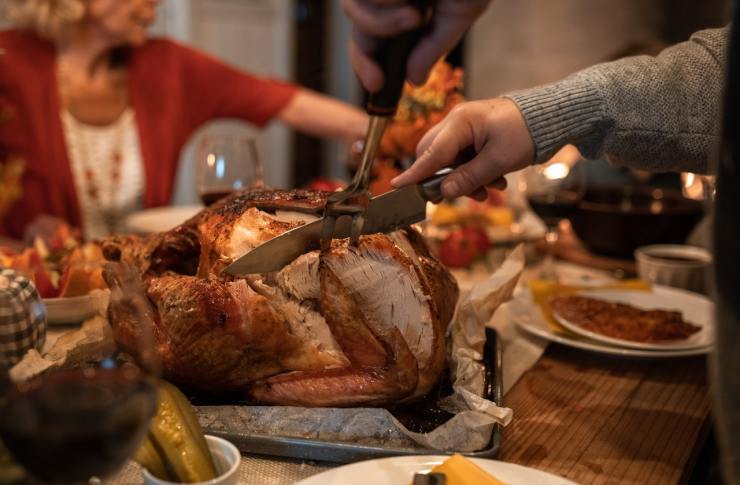Thanksgiving Feast Guide: Traditional and Modern Menu Ideas
Thanksgiving brings families together around tables filled with cherished dishes that define this beloved American holiday. From the iconic roast turkey centerpiece to innovative plant-based alternatives, creating the perfect Thanksgiving menu involves balancing time-honored traditions with contemporary dietary preferences. Whether you're hosting your first Thanksgiving dinner or looking to refresh your annual spread, understanding the essential components of a memorable feast helps ensure every guest leaves satisfied. This comprehensive guide explores classic preparations, creative alternatives, and thoughtful pairings that make Thanksgiving dining truly special.

Traditional Thanksgiving Dishes Featuring Roast Turkey and Gravy
The centerpiece of most Thanksgiving tables remains the perfectly roasted turkey, a tradition dating back centuries. A well-prepared turkey requires careful planning, typically allowing 20 minutes of cooking time per pound at 325°F. The key to achieving golden, crispy skin while maintaining juicy meat lies in proper seasoning, regular basting, and using a meat thermometer to ensure the internal temperature reaches 165°F.
Gravy serves as the essential companion to turkey, transforming pan drippings into a rich, flavorful sauce. Traditional gravy begins with a roux made from turkey fat and flour, gradually incorporating the seasoned drippings and stock. Many families pass down their gravy recipes through generations, with each cook adding personal touches like herbs, wine, or cream to create their signature version.
Classic Side Dishes Like Mashed Potatoes Stuffing and Cranberry Sauce
No Thanksgiving meal feels complete without the holy trinity of side dishes: creamy mashed potatoes, savory stuffing, and tart cranberry sauce. Mashed potatoes benefit from using starchy varieties like Russets, combined with warm milk, butter, and seasoning to achieve the perfect consistency. Some families prefer smooth, restaurant-style mashed potatoes, while others enjoy a more rustic texture with small lumps.
Stuffing, whether prepared inside the turkey or as a separate casserole, typically combines bread cubes with celery, onions, herbs, and broth. Regional variations include cornbread stuffing in the South, oyster stuffing along coastal areas, and sausage stuffing in many Midwestern households. Cranberry sauce offers a bright, acidic contrast to rich dishes, with options ranging from smooth, jellied versions to chunky preparations featuring whole berries and orange zest.
Creative Vegetarian and Vegan Alternatives for Festive Dining
Modern Thanksgiving celebrations increasingly accommodate diverse dietary preferences with innovative plant-based options. Stuffed acorn squash makes an elegant vegetarian centerpiece, filled with quinoa, nuts, dried cranberries, and herbs. Lentil loaf provides a protein-rich alternative that can be shaped and seasoned to complement traditional flavors.
Vegan adaptations of classic dishes have become increasingly sophisticated. Cashew cream creates rich, dairy-free mashed potatoes, while vegetable broth and nutritional yeast produce flavorful gravies. Coconut milk-based versions of traditional casseroles maintain creamy textures without animal products. Many hosts now prepare entirely plant-based Thanksgiving menus that satisfy both vegans and curious omnivores.
Seasonal Desserts Including Pumpkin Pie and Pecan Tart
Thanksgiving desserts celebrate autumn’s harvest with warming spices and seasonal ingredients. Pumpkin pie remains the undisputed champion, featuring a smooth custard filling spiced with cinnamon, nutmeg, and ginger nestled in a flaky pastry crust. The secret to preventing cracks lies in not overbaking and allowing the pie to cool gradually.
Pecan tart offers a sophisticated alternative to traditional pecan pie, with a shorter, more refined crust and a less sweet filling that highlights the nuts’ natural flavor. Apple crisp, sweet potato pie, and cranberry-orange bread provide additional options that showcase seasonal produce. Many families serve multiple desserts, creating a dessert buffet that allows guests to sample various treats.
Beverage Pairings to Complement Savory and Sweet Flavors
Thoughtful beverage selection enhances the Thanksgiving dining experience by complementing both savory main courses and sweet desserts. Wine pairings typically favor medium-bodied reds like Pinot Noir or Zinfandel, which complement turkey without overwhelming delicate flavors. White wine enthusiasts often choose Chardonnay or Riesling, particularly with lighter preparations or vegetarian dishes.
Non-alcoholic options deserve equal consideration, with sparkling cider, cranberry juice cocktails, and flavored waters providing festive alternatives. Coffee service becomes essential for dessert pairings, with many hosts offering both regular and decaffeinated options alongside cream and seasonal spices like cinnamon or nutmeg.
Creating a memorable Thanksgiving feast requires balancing tradition with personal preferences and dietary needs. The most successful celebrations combine time-tested recipes with thoughtful adaptations that ensure every guest feels included. Whether maintaining century-old family traditions or creating new ones, the essence of Thanksgiving dining lies in bringing people together around a table filled with gratitude, conversation, and carefully prepared food that nourishes both body and spirit.




